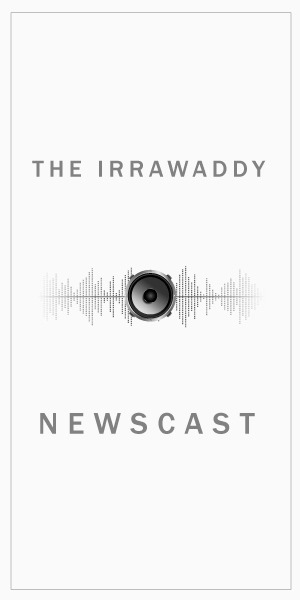KUNMING, China—Chinese think tanks based in Yunnan have been traveling back and forth between Yangon and the Chinese province’s capital, Kunming, since early 2018. But at times their itinerary has taken them beyondMyanmar’s economic hub.
They have traveled hundreds of miles conducting field investigations up and down the Irrawaddy River, from the north to the south of Myanmar, with high hopes of turning Myanmar’s lifeline into a vital trade and logistics link with China.
The strategic land and water transport route is expected to start in Kunming and run through Longchuan in Yunnan province to Bhamo in Kachin State, then to Yangon and the Indian Ocean. Developing the 2,161-km route from Kunming to Yangon could cost around 3.3 billion Chinese renminbi (700 billion kyats).
The Irrawaddy is the country’s most important waterway, flowing into the Andaman Sea through the Irrawaddy Delta.
The plan involves the transport of cargo from the Chinese border at Longchuan via the Zhangfeng/Lio Je customs gate to the northern trade hub at Bhamo by road or rail. From Bhamo, cargo and passengers could sail down the Irrawaddy to Mandalay, Yangon and the Indian Ocean.
The Chinese think tanks want to connect Shanghai, the world’s busiest port, to Kunming and then to divide into two routes: one to Shan State’s Muse via Ruili, and the other to Bhamo via Longchuan.
They have branded the project the “China-Myanmar Irrawaddy Economic Belt”, suggesting Beijing has recognized the area as a key project for the development of the China-Myanmar Economic Corridor (CMEC), which itself is a part of Chinese President Xi Jinping’s ambitious Belt and Road Initiative (BRI). The BRI aims to build a network of roads, railways and ports linking at least 70 countries from China to Africa and Europe.
Myanmar became an official member of the BRI last year after signing a memorandum of understanding establishing the CMECin September.
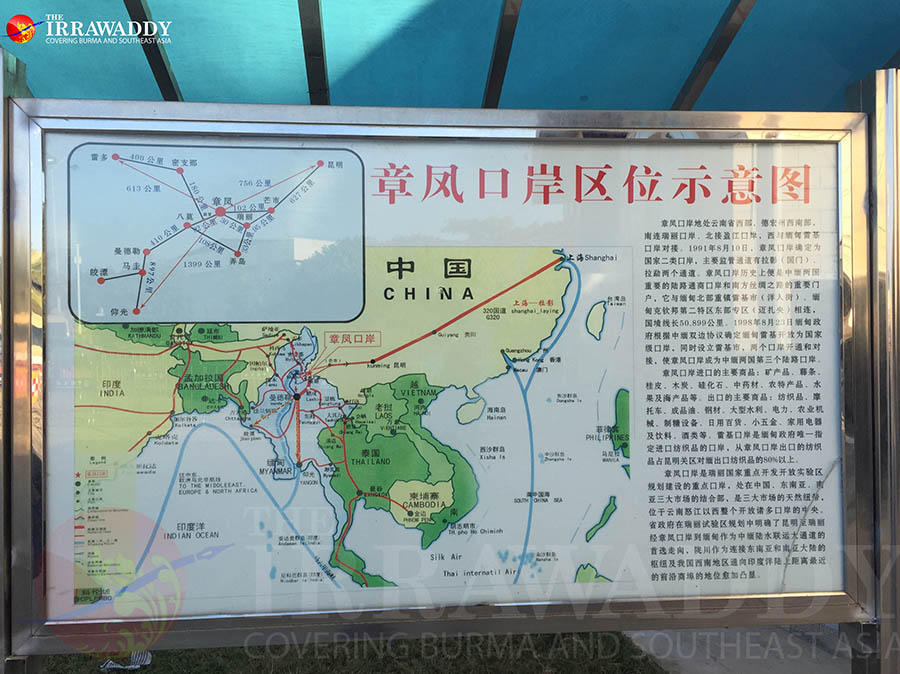
According to the Myanmar government, China has proposed 38 projects under the CMEC. However, Myanmar only approved nine projects at the second BRI forum in Beijing in April. So far Myanmar has only publicized the construction of three economic cooperation zones in Kachin and Shan states, the Kyaukphyu Special Economic Zone, and the Muse-Mandalay railway.
Liu Jinxin, the president of the China Kunming South Asia and South Asia International Logistics Research Institute (SSILR), told The Irrawaddy that the Irrawaddy Economic Belt offered more opportunities to China than the other infrastructure projects under the CMEC framework.
Liu said the route was “more secure” than the road projects in northern Shan State and more “cost-efficient” than the high-speed Muse-Mandalay railway, which would cost almost US$9 billion (13.3 trillion kyats).
The river route could reduce transport costs linking 60 percent of major cities in Myanmar as 30 million people live along the river, Liu added.
“In terms of cost efficiency, the Irrawaddy project is the best choice,” the Chinese think-tank said.
For China, the Irrawaddy route seems the best way to cut costs and address security risks due to ethnic conflicts. The route would significantly reduce the reliance on land routes through the conflict areas of northern Shan State, which have seen frequent clashes that could easily cut major trade routes between the two countries.
According to research, the Irrawaddy is almost ideal for navigation, with depths greater than 5 meters in 80 percent of the river,and the current is largely steady.
“Security is the main concern. We all know what happened in August. So we have to think about a new way of operating,” Liu said, referring to deadly fighting between government troops and ethnic insurgents in northern Shan State.
“By using the Irrawaddy, agricultural goods can be exported to China. It can also reduce high-security risks by road. If agricultural products could be transported by river, it will greatly reduce costs,” he added.
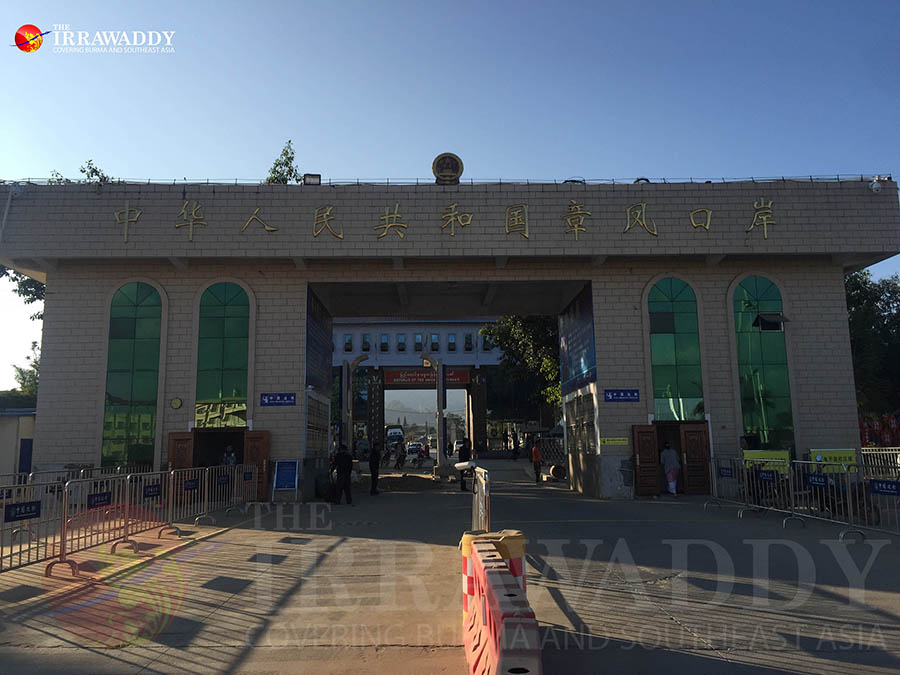
The SSILR provides guidance, research and analysis of Chinese infrastructural projects for China’s top economic planning agency, the National Development and Reform Commission (NDRC), and other major consultative committees.
In a clear sign of how serious both Beijing and the Yunnan government now are about implementing the China-Myanmar Irrawaddy Economic Belt project, the think tank has conducted six studies in Myanmar in the past two years—three of them directly related to the project.
A senior researcher at the SSILR, Chen Tiejun, said the river project could be the cheapest option.
“We have prepared for the road project from Zhangfeng to Bhamo. The road upgrading project is already underway,” he said.
A Chinese-language notice board at the border invites potential Chinese investors to participate in the Irrawaddy project. It says that 410 km of the Irrawaddy needs to be cleared and four jetties constructed at Bhamo. Many road upgrade projects are already under way. According to China, Longchuan has already spent 20 million RMB (4.2 billion kyats) upgrading the road to Bhamo.
Chinese think tanks and officials from Yunnan have been pushing the Myanmar government to implement the Irrawaddy Economic Belt, although the meetings have received little publicity.
Yunnan province submitted a proposal to carry out investigations along the river two years ago. However, Myanmar has yet to approve the proposal.
“We have proposed detailed ideas about how to move forward with the project. One suggestion is to construct a railway from Zhangfeng to Bhamo. Another is to build a Zhangfeng-Bhamo cross-border economic zone,” Liu said.
China has been proposing a link between Yunnan to the Indian Ocean via the Irrawaddy for over two decades. In 1989, the Yunnan government first raised the prospect of using the Irrawaddy for mass transport for China in a similar proposal to the current project.
The earlier project was named the “China Kunming-Myanmar Yangon-Ayeyarwaddy [Irrawaddy] River Portage Passage”, also known as the “Sino-Myanmar Land and Water Transportation Passage”. Strongly backed by the Yunnan government, Myanmar’s then-ruling military junta and the Chinese side discussed implementation of the project for a while, but the talks broke down in 2004 due to misunderstanding and disagreements on both sides. Neither side officially announced the reason for the cancellation of the agreement, however.
The construction of the river passage is included in the Chinese State Council’s “Overall Infrastructure Interconnection Master Plan (2014-2035)”, the “Yunnan Water Transport Logistics Development Plan (2014-2020)” and the “Development and Opening Up Plan for the Border Areas of Yunnan Province (2016-2020)”. In 2015, Dehong Prefecture officials also described the passage as a priority in their planning, and promotion of the passage is referred to in Luanchuan County’s 2019 plan.
In June 2018, the Yunnan Provincial Development and Reform Commission (YPRDC) proposed to the 12th Session of the Chinese People’s Political Consultative Conference of Yunnan Province that work on the Irrawaddy River passage project be resumed.
Last year, Myanmar Vice President U Henry Van Thio and Chinese Foreign Minister Wang Yi met on the sidelines of the Greater Mekong Subregion (GMS) meeting in Vietnam. According to Chinese officials, the two sides discussed the implementation of the Irrawaddy Economic Belt.
In 2017, Myanmar’s government announced plans to encourage investment in its waterways to ease road congestion and provide a cost-efficient route under the National Transport Plan.
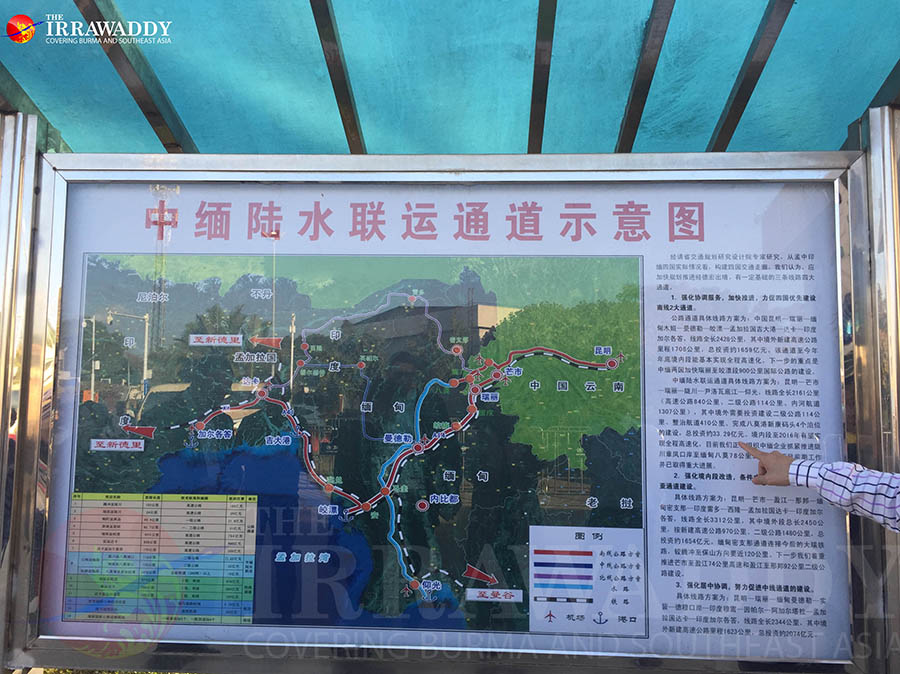
Launched in 2014, the plan outlines a series of investments, infrastructure projects and reforms that aim to reduce shipping costs and expand transport capacity to increase transport sector investment from 1-1.5 percent of GDP to 3-4 percent. This would put Myanmar roughly equal with Thailand and Vietnam. During the same year, the government announced plans to begin consultations with regional authorities to develop six river ports – four on the Irrawaddy and two on the Chindwin River.
The ports would be at Sinkham, Mandalay, Pakokku and Magwe on the Irrawaddy and Kalewa and Monywa on the Chindwin. Mandalay’s port is currently being upgraded with Japanese investment.
In January 2019, Myanmar added construction of the ports in Bhamo, Pakokku, Magwe, Kalewa and Monywa to the priority projects list, launched at the country’s first investment forum.
U Thant Sin Maung, the transport and communications minister, said the port projects would boost development and create jobs while easing the movement of goods and people.
Bhamo’s state parliamentarian, U Zaw Thin, told The Irrawaddy that he has met several Chinese government officials and think tank representatives from Yunnan during the past two years.
“Our trade mainly relies on China and we suffer due to unfair trade relations. They often change border trade policies,” U Zaw Thin said.
China strictly limits imports from Myanmar. Corn, pineapples and other goods have been blocked since May, causing massive losses for farmers.
“Without a fair trade system, the Irrawaddy project will only benefit China. Both governments need to negotiate to have a fair trade system first before implementing it,” the parliamentarian added.
The Kachin regional government recently granted the Chinese Hong Xin Jia Fang company the road upgrade project from Bhamo to the Lio Je border for 30 years, U Zaw Thin said.
“We have not agreed who will implement the Irrawaddy project. Whoever invests in the project must follow the Myanmar Investment Commission’s rules,” he added.
Recently, the Netherlands-based Transitional Institute warned about the dangers of channelization on the river and the commercial viability of the project.
According to China’s standard river classification, the largest vessels require a minimum water depth of 3.5 to 4 meters across the river to be classified as a “Class 1” route, the highest grade. Applying the system in Myanmar would be problematic, the Dutch NGO said.
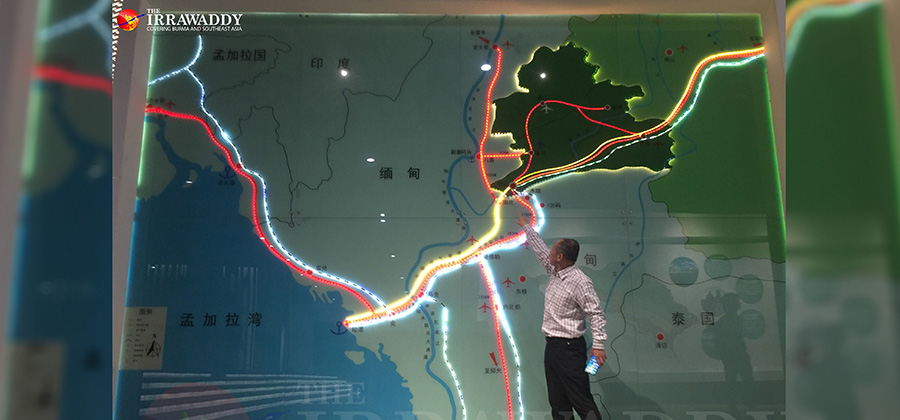
The Asian Development Bank recommended against channelization between Bhamo and Mandalay in 2016 because of the cost. It said channelization south of Mandalay was viable only to a depth of 1.5 meters, which would be unsuitable for China’s needs.
Myanmar’s Airavati organization said the Irrawaddy was becoming clogged with sediment that was reducing the river’s flow due to climate change and deforestation. The removal of stones from the river is causing erosion and water is polluted by factory discharge.
The program coordinator for Airavati, Henry Dam Khaw Ling, said improving river transport could boost the economy but it would harm residents and cause erosion, sedimentation, pollution and threaten clean water supplies.
“People need to be well informed about the project. The developers must listen to the public. They also need to choose ways to minimize the harm to the residents,” Henry Dam Khaw Ling said.
According to the Ministry of Investment and Foreign Economic Relations (MIFER), China has not submitted an official proposal to the Myanmar government for the Irrawaddy Economic Belt.
It was not included in the projects approved under the CMEC in April 2019.
“So far there is no new project proposed by China. Currently, discussions are focused on details about the projects which have been approved by both sides,” U Aung Naing Oo, the permanent secretary from MIFER, told The Irrawaddy.
“We cannot say whether we will allow the project. Because we have not seen the proposal. Our decision will be based on balancing what we want and what they want to do,” he said.
On the Chinese side, the Yunnan Development and Reform Commission is seeking to have the project included in the Silk Road Fund or funded by the Asian Infrastructure Investment Bank (AIIB).
SSILR is expected to hold more government meetings in Naypyitaw early next year.
“We will have more discussions about it. We will encourage them to allow the project to go forward,” Liu said.
You may also like these stories:
China Halts Bridge Construction After 6,000 Rare Fish Die: Media
China Drafts New Farm Rules to Control Rural Plastic Pollution
China Won’t Allow Foreign Forces to Interfere in HK, Macau, Xi Says













